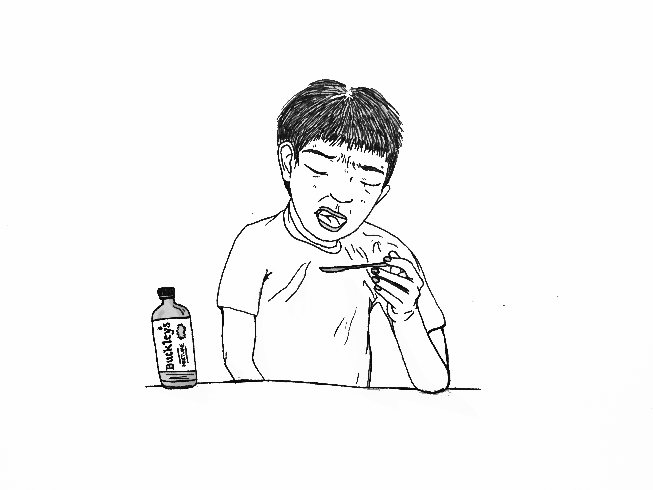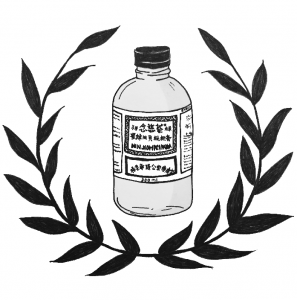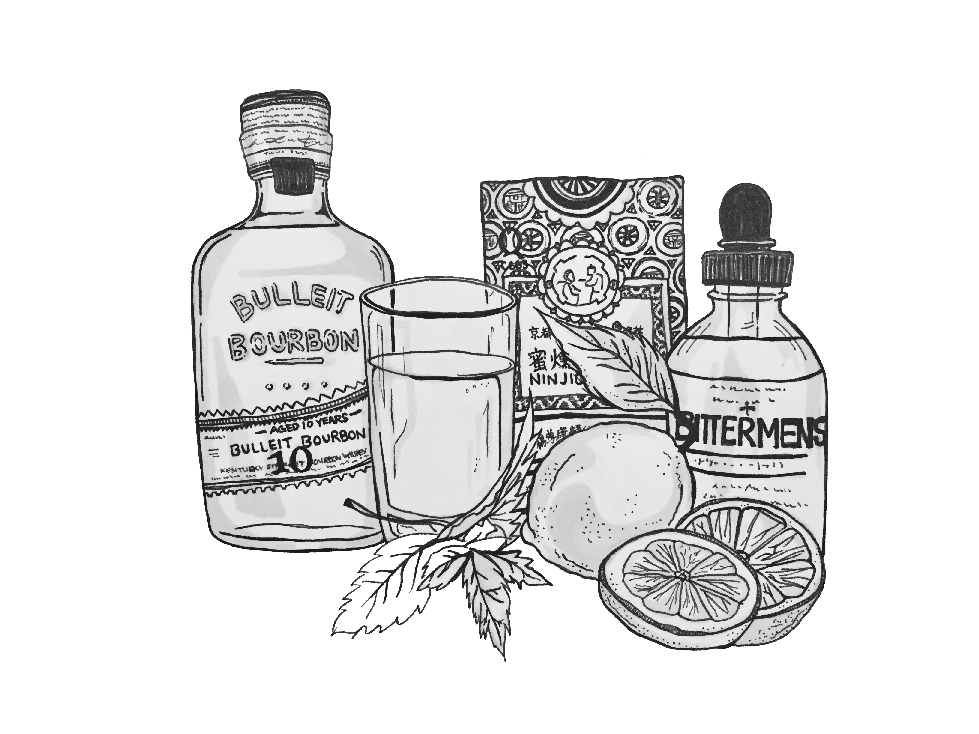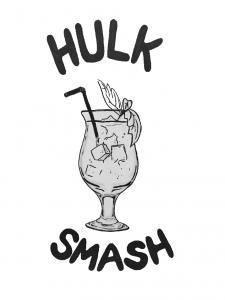We all know how your typical TV commercial for cough syrup will go: a child will be met with a fearful adversary (a parent holding a spoonful of cough syrup) and an epic battle will ensue. The child either runs from the impending spoon in disgust or indignantly fights off the spoon. A frustrated parent sighs in frustration before they are handed a miraculous alternative – a new cough syrup, flavoured to be some variation of cherry or grape. The children make peace and happily gulp the syrup as the narrator praises the liquid for its natural cherry taste, spill proof packaging, and non-drowsy properties, while quickly disclaiming that the syrup is not intended for use for children under the age of 6 – all in one breath.

Growing up with a family of Chinese medical practitioners, despite our constant requests to try said magical Western cough syrups, my mother would tell me that they were “no good, and full of chemicals”. Much like many other forms of Western medicine, she refused to purchase said cough syrup and we stuck to the traditional Chinese remedies that she stocked in her herbal store. It wasn’t until elementary school when I got sick at a sleepover where all my curiosities regarding Western syrup (Why didn’t the children want to eat it? Why would cough syrup make you drowsy?) were answered: Western cough syrup doesn’t exactly taste pleasant. When I came home from that sleepover, my mother prepared for me our usual cough remedy: Nin Jiom Pei Pa Koa.
Nin Jiom Pei Pa Koa has many variations in its name: as Cantonese kids, we would refer to it as pei pa goh, but Mandarin speaking clients would come into my mother’s apothecary shop asking for chuan bei pei pa gao. Western clients would come in asking for nin jiom. The official name on the bottle, reads King-To Nin Jiom Pei Pa Koa in English, a Cantonese romanization and abbreviation of the Chinese characters written on the bottle: 京都念慈菴川貝枇杷膏 (jing du nian ci an chuan bei pi pa gao). When patients sick and congested with a cold or cough visited my mother’s herbal shop, my grandfather would write them a prescription for a concoction of Chinese medicinal herbs, and they would purchase a bottle of nin jiom on their way out. Regardless of what you call it, nin jiom is a household staple that you’ll find in every Chinese family’s medicine cabinet.

Nin jiom is a sweet, aromatic herbal cough syrup, thick in consistency and the colour of molasses. It comes in a glass bottle with imperial red and yellow accents, and we would have to be careful not to drip the thick liquid all over the sides of the bottle. We would either take spoonfuls of nin jiom and wash it down with a glass of water, or directly dissolve a spoonful of nin jiom into a glass of warm water and drink it like a tea. We loved its sweet taste, and it was never a struggle to get us to eat our cough syrup – we’d willingly do so, even if we weren’t sick! The syrup was natural and didn’t have any side-effects like drowsiness, either. It was essentially what Western cough syrups in those commercials were trying to be: fuss-free, great tasting, and safe. The only downside was that the viscous liquid would drip all over the sides of the bottle and make it super sticky – I’d give the Western syrups an extra point for their spill-proof packaging…
So imagine my surprise when I stopped by Prohibition at the Rosewood Hotel Georgia for the first time; my friend and I ordered a drink off the old fashioned menu, but the bar was unable to make the drink. The waitress explained, “We just ran out of nin jiom.” The sound of the familiar words prompted me to grab the drinks menu and look over it again: the ingredients listed rye whiskey, nin jiom, and a lemon twist. Shortly after, the waitress returned with a glass of said drink. “We were able to scrape the last bit out of the glass….” I personally am not a fan of whisky. I don’t like my drinks to be boozy, and despite my parents buying bottles of Hennessy to display on shelves, I never developed a taste for spirits. I hesitantly sampled a sip of said drink out of curiosity – the nin jiom was a fine complement, rich and a bit sweet. I began to notice the use of nin jiom in cocktails at other bars, as well. The Keefer Bar (a whimsical apothecary themed bar in Chinatown that hosts burlesque shows and is nested in a heritage building) features their Laoshi, a medley of Bulleit bourbon, Shaoxing aperitif, nin jiom, and black sea salt.

I brought up the use of this homely cough syrup to my mother one day, when I was visiting her shop. After her initial surprise wore off, she nagged to me in a motherly tone. “See,” she began, “no chemicals. You can even mix it with alcohol.” We Googled a recipe to try when we got home and found Kindred Cocktail’s Hulk Smash, but we haven’t gotten around to it yet since our liquor cabinet currently consists of only a bottle of unopened Hennessey and a half-empty Moutai.

To grab a bottle of nin jiom for your sore throat or bartending adventures, visit: http://chinatown.today/location_category/dried-goods/






